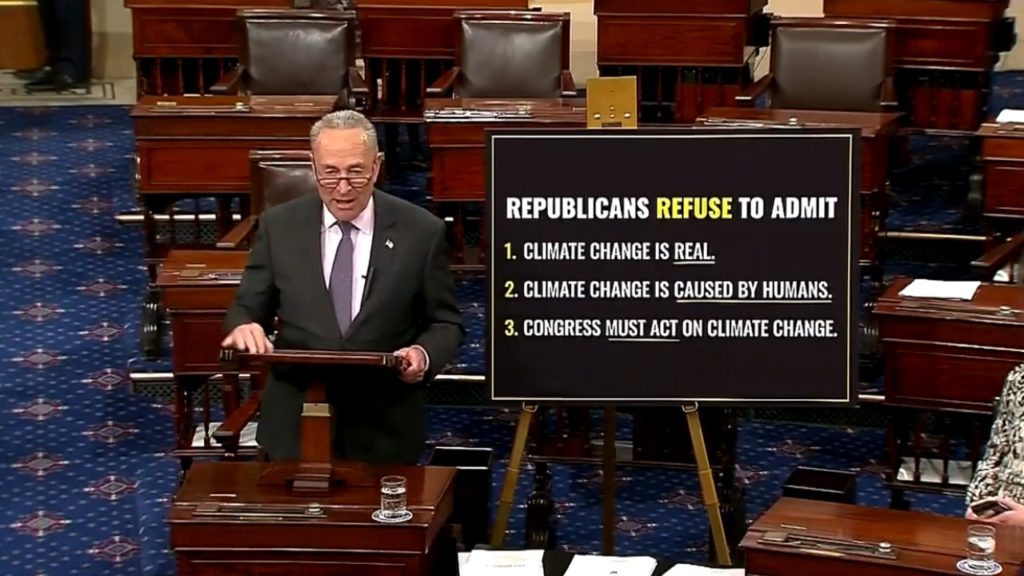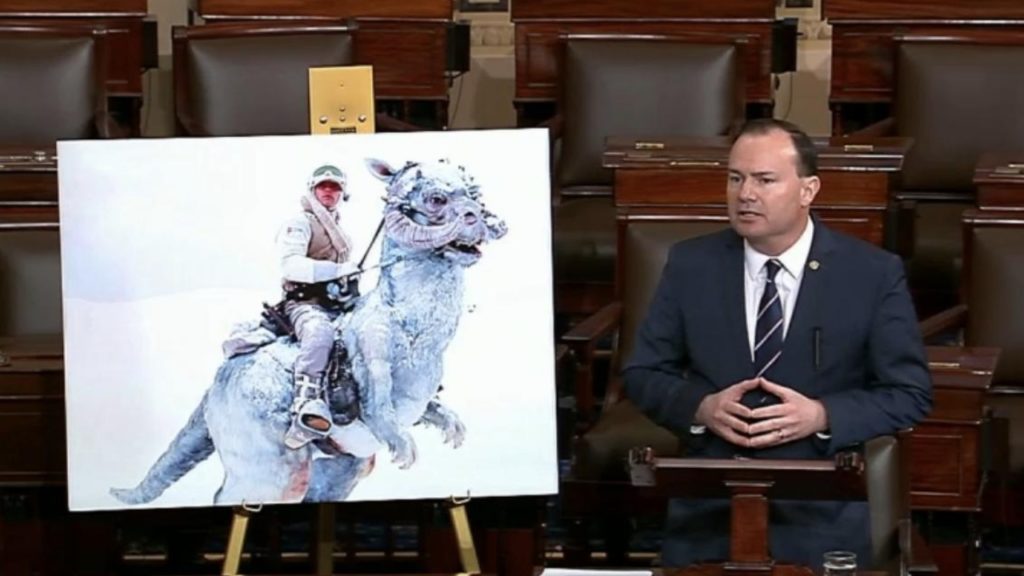
WASHINGTON – In a vote brought forward by Senate Majority Leader Mitch McConnell, a resolution to support the Green New Deal failed in a 0-57 vote, with 43 Democrats just voting as “present.”
The result is hardly a surprise as Democrats in the Senate were opposed to the resolution from the start as they claimed McConnell was trying to score political points by forcing the vote.
The item on the Senate calendar was titled as ‘Joint resolution recognizing the duty of the Federal Government to create a Green New Deal.’
The concept was unveiled in February by freshman Democrat New York Congresswoman Alexandria Ocasio-Cortez and veteran Sen. Ed Markey of Massachusetts. The underlying goal is to transform our economy by creating thousands of jobs in renewable energies while combating climate change.

The proposal calls for meeting all power demands through clean, renewable and zero-emission energy sources by 2030, including a dramatic increase in wind and solar power generation.
This proposal goes beyond President Obama’s Clean Power Plan which was scrapped by President Trump.
Green New Deal resolution as introduced (PDF – 14 pages) / Green New- Deal FAQ
A fact sheet distributed about the plan describes a “10-year plan to mobilize every aspect of American society at a scale not seen since World War 2 to achieve net-zero greenhouse gas emissions and create economic prosperity for all.”
Drilling down into the document shows an effort to “build on FDR’s second bill of rights by guaranteeing” a job with a family-sustaining wage and benefits, education benefits, clean air and water, healthy food, high quality health care, housing, an economy free of monopolies and “economic security for all who are unable or unwilling to work.”
It also calls for a 40-60% reduction in global emissions in the next 11 years.
“We set a goal to get to net-zero, rather than zero emissions, in 10 years because we aren’t sure that we’ll be able to fully get rid of farting cows and airplanes that fast, but we think we can ramp up renewable manufacturing and power production, retrofit every building in America, build the smart grid, overhaul transportation and agriculture, plant lots of trees and restore our ecosystem to get to net-zero,” the fact sheet reads.
The plan does not include creating new nuclear plants and states a desire to decommission every nuclear plant within 10 years. There’s also no call for a carbon tax, but states “a carbon tax would be a tiny part of
a Green New Deal in the face of the gigantic expansion of our productive economy..” Cap and trade of carbon credits is also listed as a “tiny part.”
The staff and campaigns of Sen. Kamala Harris (D-California), Sen. Bernie Sanders (D-Vermont), Sen Kirsten Gillibrand (D-New York), Sen. Cory Booker (D-New Jersey) have confirmed they are co-sponsors. Former Colorado Governor John Hickenlooper and presidential candidate has came out in opposition to the proposal.
Getting this plan out of the House will be a challenge. Having the Republican-controlled Senate approve is likely not possible.
Other key points include, but are not limited to:
- Repair and upgrade U.S. infrastructure. ASCE estimates this is $4.6 trillion at minimum.
- Meet 100% of power demand through clean and renewable energy sources
- Upgrade or replace every building in US for state-of-the-art energy efficiency
- Work with farmers and ranchers to create a sustainable, pollution and greenhouse gas free, food system that ensures universal access to healthy food and expands independent family farming
- Totally overhaul transportation by massively expanding electric vehicle manufacturing, build charging stations everywhere, build out highspeed rail at a scale where air travel stops becoming necessary, create affordable public transit available to all, with goal to replace every combustion-engine vehicle
- Identify new emission sources and create solutions to eliminate those emissions
So what is the plan to pay for these audacious goals? That’s not entirely clear.
“The Federal Reserve can extend credit to power these projects and investments and new public banks can be created to extend credit. There is also space for the government to take an equity stake in projects to get a return on investment,” the document reads.

